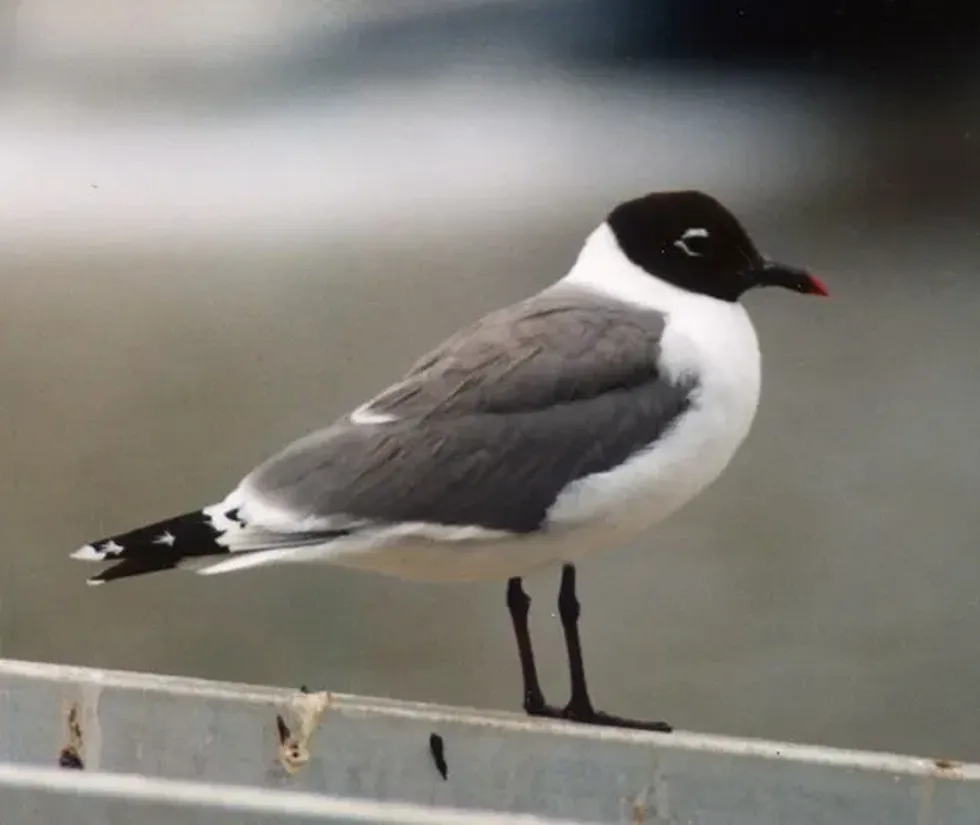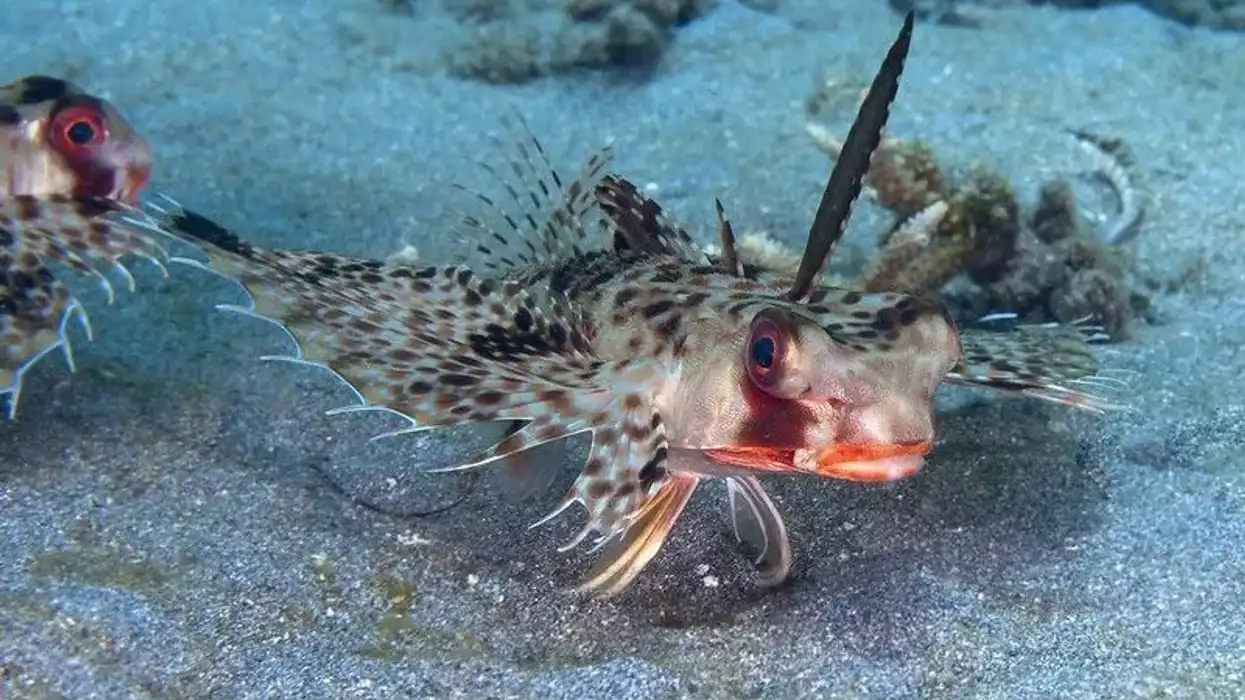In this article, we will learn about the North American bird, Franklin's gull (Leucophaeus pipixcan). Franklin's gulls belong to class Aves, order Charadriiformes, family Laridae.
The Franklin's gull can be found in the prairies and marshes of North America. The Franklin's gulls are migratory and during the non-breeding season or the winter season, these birds can be found along the west coast of South America like Peru and Chile.
The Franklin's gull undertakes long migration and some of these birds have even been spotted as far as Australia, New Zealand, and Hong Kong. The breeding season plumage of the adult Franklin's gull during the summer season is mostly white with a dark gray back, wings, and a distinct white eye-ring.
They also have bright red bills, which get faded during the winters.
The adults Franklin's gulls winter plumage have a white head with smudges of black. The young Franklin gull immature plumage is much paler in color with shades of brown.
The Franklin gull nest is built by both males and females. The floating nest with nest material stolen from other nests can be seen in still, shallow water.
Franklin gull predators include great horned owls as well as minks. Keep reading to learn more about these migratory birds from Northern America.
If birds fascinate you and you enjoy reading about them, be sure to check out and learn more about Green Heron and Australian Pelican.
Franklin Gull Interesting Facts
What type of animal is Franklin gull?
Franklin's gulls are a type of bird.
What class of animal does a Franklin gull belong to?
Franklin's gulls belong to class Aves, order Charadriiformes, family Laridae.
How many Franklin gulls are there in the world?
There are no population estimates to calculate the total number of Franklin's gulls in the world.
Where does a Franklin gull live?
Franklin's gulls breed in North America and can be found in abundance in the north and central America. During migration in the winter season, Franklin's gull moves towards South America. The Franklin gull range extends to Argentina, Chile, and Peru in the winters.
What is a Franklin gull's habitat?
Franklin's gull (Leucophaeus pipixcan) habitat includes inland marshes, sloughs, and prairies in the Northern Great Plains. Due to the change in the condition of these marshes, the birds' location and habitat might change too. During winters, Franklin gull migration to the west coast of southern areas can be seen.
Who do Franklin gulls live with?
During migration and the winters, the Franklin gulls are highly social and can be seen in mixed flocks.
How long does a Franklin gull live?
A Franklin gull has a life expectancy of about nine years. The oldest living Franklin gull was aged nine years and five months.
How do they reproduce?
The nesting colonies are large. These species mate for life. Nesting sites for these North American birds include marshy areas where several feet deep water bodies can be found.
Both the parents take part in building the nest. The floating nest is usually made with nest material that is stolen from other nests. The nests are lined with plant material, cattails, and brushes.
Their main breed month is in April. The female lays about two to four eggs. The eggs are greenish-brown and appear to have dark blotches on them. The incubation period can last anywhere between 23 - 26 days.
The hatchlings emerge with their eyes open and have the ability to start standing right from the very next day. The chicks are fed by both the parents and they remain in the nest for about 20 days. They develop flying capability about 35 days later.
What is their conservation status?
The Franklin gulls of family Laridae have been evaluated and given the status of Least Concern by the International Union for Conservation of Nature or IUCN. The population is known to be increasing further.
Franklin Gull Fun Facts
What do Franklin gulls look like?
Franklin gull is a medium-sized bird species. Adult Franklin gull species during the summer is white in color. It has a black head and the back, as well as the wings, are dark gray.
The wings have large white spots and black tips. The legs are red in color. The bird's distinct white eye-ring provides a stark contrast to its blackhead.
The non-breeding season plumage or the Franklin gull winter plumage features a paler bill as the deep red begins to fade. The area of the black hood reduces and the bird can be seen with a white forehead, in comparison to the Franklin gull breeding season plumage.
Young or juvenile Franklin gulls have lesser developed hoods and do not have the distinct white band.
How cute are they?
The white, gray, and black plumage with a deep red colored bill make the Franklin gull very pleasing to look at.
How do they communicate?
The call of the non-breeding season Franklin gull bird species in the winter season sounds like a sharp 'kek' which can be heard while flying, feeding, or even before roosting. When they feel threatened, they give out an alarm call which is a rapid series of 'kek.'
During the mating season, the courting male Franklin gull sounds can be heard with a long, high-pitched 'kaah' and 'keeaah.'
How big is a Franklin gull?
Franklin gulls are small to medium-sized birds. They have a length between 12.6-14.17 in (32-36 cm). The length of the wingspan is about 33.5-37.4 in (85 cm- 95 cm). They are somewhat smaller than a laughing gull.
How fast can a Franklin gull fly?
More research needs to be conducted to calculate the flying speed of a Franklin gull.
How much does a Franklin gull weigh?
The Franklin gull weighs between 8.1-10.6 oz (229.6-300.5 g).
What are the male and female names of the species?
There are no unique names to identify the male and the female Franklin gull, but they can be referred to as cock and hen respectively, like male and female of other species of birds.
What would you call a baby Franklin gull?
A baby Franklin gull can be referred to as 'chick.' When they are just born, they are known as 'hatchlings'. The chicks remain in the nest with their parents for about 20 days. Short distances are covered by the young birds by swimming around the nest. The young Franklin gull has a much paler color than the adult gull.
What do they eat?
Franklin's gull is an omnivore and it forages for various insects and fish. During summers, the majority of their diet consists of aerial as well as aquatic insects. They mostly feed on earthworms, beetles, bugs, locusts, grasshoppers.
They can also be seen feeding on a variety of vegetation, sunflower seeds, oats, and wheat at times. Mostly during the winter, Franklin's gull consumes aquatic prey like small fish and crustaceans.
Leeches and small mice also are a part of their diet. They prey on insects during their flight. Franklin gull predators include great horned owls as well as minks.
Are they poisonous?
No, Franklin gulls are not poisonous in nature. They, in fact, very rarely are even aggressive towards humans. Their aggressive behavior is usually because they want to protect their kids.
Would they make a good pet?
Franklin gulls, like most gulls, are not supposed to be kept as pets. They are very independent in nature.
Did you know...
To catch its prey, Franklin's gull bird spins in large circles to create a vortex and brings the prey closer to the surface of the water.
When Franklin's gull (Larus pipixcan) specimen was first discovered, it was thought to be the laughing gull. It was only on a later expedition that it was realized that this is a different species than the laughing gull.
The floating nest of Franklin's gull requires high maintenance as the nest material is very prone to decay.
During the mating season, males try to impress the females by erecting their neck feathers and keeping their heads hidden. The interested females respond with a similar display.
Franklin's gull undertakes long-distance migration. Some of these North American birds have been found in countries such as Hong Kong, Australia.
The Galapagos Franklin gull, along with four other species of gulls, can be found in large numbers in the Galapagos Islands.
Who was Franklin's gull named after?
The first specimen of Franklin's gull (Larus pipixcan) was seen in the 1823 expedition. This expedition was led by the famous Arctic explorer Sir John Franklin. These birds of North America were named after him.
How to differentiate between a Bonaparte Gull and Franklin Gull?
Franklin vs. Bonaparte gull description might look similar to each other from afar, closer observation indicates a number of differences in their description. The Bonaparte gulls are smaller overall with a small bill.
They also have a distinct white triangle on their upper wing. The Franklin's gull deep red bill during breeding is absent in the Bonaparte gull, which has a thin dark bill. The colors of the legs are also different.
Here at Kidadl, we have carefully created lots of interesting family-friendly animal facts for everyone to discover! For more relatable content, check out these northern Gannet Surprising Facts and Northern shrike Facts pages.
You can even occupy yourself at home by coloring in one of our free printable bird coloring pages.









